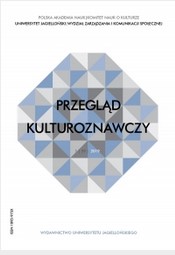Malarstwo jako świetlny design w przestrzeniach projekcyjnych
Painting as light design in projection spaces
Author(s): Andrzej GwóźdźSubject(s): Visual Arts, Aesthetics, Film / Cinema / Cinematography, ICT Information and Communications Technologies
Published by: Wydawnictwo Uniwersytetu Jagiellońskiego
Keywords: High Definition technoculture; design; Art & Music Immersive Experience; Bauhaus; Laszlo Moholy-Nagy; reflected colour-light-plays; light art; vision in motion;
Summary/Abstract: Among numerous aesthetics forms of light practices present in the galloping High Definition technoculture light festivals (applying various types of video-mapping practices in urban areas) and immersive performances based on projection (screen) design of painting (the Alive cycle, performances using the AMIEX Technology® – Art & Music Immersive Experience) have become increasingly successful all over the world. Their expansion is undoubtedly a legacy of promotion of light in the almost a century old Bauhaus theory and practice (including Kurt Schwerdtfeger’s and Ludwig Hirschfeld-Mack’s light games, or László Moholy-Nagy’s light modulator). Thus, on the basis of painting a kinetic art of light (a kind of video art) is created. This art promotes „using” projection design of painting, not just a contemplative watching (as in the case of a museum). In this way, a digital form of timed painting in motion is implemented and initiates new styles of experiencing traditional painting art, equipped with qualities of an immersive light spectacle. The results are „video frescoes” – intermedia at the intersection of painting and projection, simulation and recording, where the subject of experience is comprised of a light spectacle and a place of its disclosure.
Journal: Przegląd Kulturoznawczy
- Issue Year: 43/2020
- Issue No: 1
- Page Range: 70-91
- Page Count: 22
- Language: Polish

